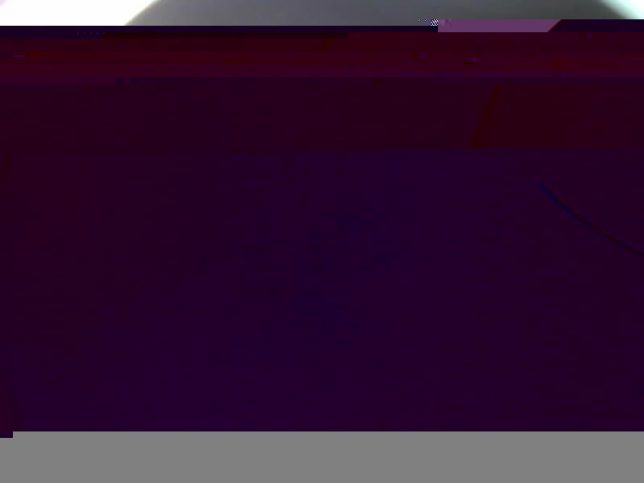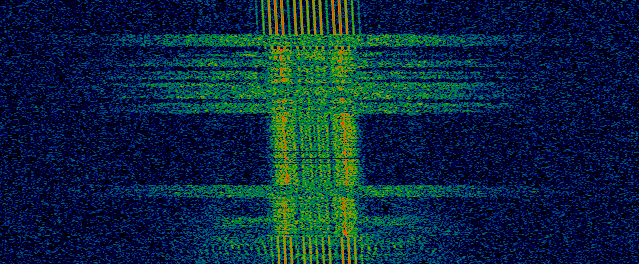LilacSat-1 is one of the QB50 project cubesats. It will be released tomorrow from the ISS. The most interesting aspect of this satellite is that it has an Amateur Radio transponder with an FM uplink on the 2m band and a Codec2 1300bps digital voice downlink on the 70cm band. It is the first time that an Amateur satellite really uses digital voice, as previous tests have only used an analog FM repeater to relay D-STAR and similar digital voice modes. LilacSat-1 however implements a Codec2 encoder in software using its ARM processor. I have talked about LilacSat-1 Codec2 downlink already in this blog. Here I present a low latency decoder for the digital voice downlink that I have recently included in gr-satellites.
Tag: lilacsat
Open telecommand for BY70-1
Recently, Wei BG2BHC has published instructions for the use of BY70-1’s camera by Amateurs. Essentially, there are three commands that can be used: 0x00 to take a picture and send it, 0x55 to take a picture and store it in memory, and 0xaa to send the picture stored in memory. He also gives the modulation and coding details for the commands. They use AX.25 with 1000baud FM-AFSK with tones at 1000Hz and 1833.33Hz. The AX.25 frames are UI frames containing a single byte with the command (0x00, 0x55 or 0xaa as described above). For ease of use, he also gives WAV recordings of the three commands, so they can be played back easily into an FM transmitter by any Amateur. Here I look at the contents of these WAV files and how to process and create this kind of packets.
Coding for HIT satellites (and other CCSDS satellites)
The Harbin Institute of Technology satellites LilacSat-2, BY70-1 and the upcoming LilacSat-1 all use a concatenated code with an \(r=1/2, k=7\) convolutional code and a (255,223) Reed-Solomon code according to the CCSDS TM Synchronization and Channel Coding blue book specifications. The GNU Radio decoder gr-lilacsat by Wei BG2BHC includes a custom implementation of the relevant part of the CCSDS stack, probably ported into GNU Radio from some other software.
Recently, I have been working on decoding KS-1Q and I’ve seen that it uses the same CCSDS coding as the HIT satellites. This has made me realise that most of this CCSDS coding can be processed using stock GNU Radio blocks, without the need for custom blocks. The only exception is Reed-Solomon decoding. This can be done easily with gr-libfec, which provides an easy interface from GNU Radio to Phil Karn’s libfec. Here I look at the details of the CCSDS coding and how to process it with GNU Radio. I’ve updated the decoders in gr-satellites to use this kind of processing. I’ll also talk about the small advantages of doing it in this way versus using the custom implementation in gr-lilacsat.
First data from BY70-1
The Amateur satellite BY70-1 launched yesterday at around 3:00UTC. The launch was a partial failure, as all the satellites from this launch have been put in a 520x220km orbit. The perigee is too low to support a long duration orbit, and the satellites will decay in a couple months. BY70-1 has a 9k6 BPSK telemetry downlink on 70cm. This downlink is also used to download JPEG images from the onboard camera. I’ve talked about this in a previous post.
Since I’m at 33C3, I haven’t been able to receive this satellite with my own equipment yet. However, Tetsu JA0CAW already has posted some IQ recordings. Here I look at recording1 and recording2.
My first impression is that the packets are not very strong. I don’t know if this is something about JA0CAW’s station or that the downlink of BY70-1 is not very strong. I’ve only managed to decode the strongest packets in the recording. In comparison, LilacSat-2 has a very strong downlink and I can decode correctly almost from horizon to horizon with a handheld 7 element yagi.
Perhaps it’s possible to do some optimization of the decoder parameters such as filter width or loop bandwidths, but so far I haven’t experimented much. I just wanted to write a quick post to publish all the information I’ve managed to decode. I’m using the decoder from gr-satellites. The decoder log from recording1 is in this gist. From recording2 I could only decode a couple of JPEG packets and no telemetry packets.
There are three distinct types of telemetry packets. It seems that BY70-1 transmits all the three types in a single burst. Another curiosity: the message in one of the telemetry packets uses the callsign ON02CN, which is the Belgian callsign that LilacSat-1 will use. Since LilacSat-1 is part of the QB50 project, it makes sense that it uses a Belgian callsign. However, it seems that it’s some sort of software configuration error that BY70-1 is also using this callsign.
Update on 30/12/2016: I have found that there was a problem with the Costas loop bandwidth in the GNU Radio receiver on gr-satellites. Its value was too large. I have copied the value from the example demodulator on gr-lilacsat and now the decoder works much better. I have even been able to decode the following image from recording2.

The result looks pretty bad, but the keen eye will notice that in fact there are few packets lost in this JPEG image. Compare with the image posted by BG2BHC, which has no errors and is presumably the same image.
Looking at BY70-1 image downlink
BY70-1 is a Chinese Amateur satellite that will launch on Monday 26 December. It has a V/U FM repeater, a camera and a 9k6 BPSK downlink on 70cm that transmits telemetry and the JPEG images taken by the camera. The BPSK downlink uses the same modulation and coding as LilacSat-2, of which I have spoken several times. Recently, Wei MingChuan BG2BHC has added support for the image downlink of BY70-1 to gr-lilacsat and a bit stream recording to test the image receiver.
Unfortunately, the image decoder is closed-source, as it contains some certification methods used to avoid fake packets over the internet. However, Wei gave me a brief description of how the image downlink protocol works. After seeing the closed-source decoder running, I had enough to figure out how the protocol works. I have implemented an open-source image decoder as a python GNU Radio block. It is in my gr-lilacsat fork, and it will soon be included in the upstream gr-lilacsat repository. Here I look at the protocol used for the image downlink.
LilacSat-1 Codec 2 downlink
LilacSat-1 is one of the satellites that will form part of the QB50 constellation, a network of 50 cubesats built by different universities around the world that will conduct studies of the thermosphere. LilacSat-1 is Harbin Institute of Technology’s satellite in the QB50 constellation, and is expected to launch late this year. Incidentally, his “brother” LilacSat-2 launched in September 2015, and it has become a popular satellite because of its Amateur Radio FM repeater.
Apparently, LilacSat-1 will feature a very novel transponder configuration: FM uplink and Codec2 digital voice downlink. I have discovered this yesterday while browsing the last updates to the Harbin Institute of Technology gr-lilacsat github repository. In fact, there is no mention of digital voice in the IARU coordination page for LilacSat-1. According to the coordination, the transponder will be mode V/U (uplink in the 144MHz band and downlink in the 435MHz band). However, it seems that only downlink frequencies have been coordinated with IARU. Hopefully the uplink frequency will lie in the satellite subband this time. LilacSat-2 is infamous because of its uplink at 144.350MHz, which lies in the SSB subband in the Region 1.
Codec2 is the open source digital voice codec that is used in FreeDV. This makes LilacSat-1 very exciting, because Codec2 is the only codec for digital voice radio that is not riddled with patents. Moreover, it performs much better than its main competitor: the AMBE/IMBE family of codecs, which are used in D-STAR, DMR and Yaesu System Fusion. Codec2 can achieve the same voice quality as AMBE using roughly half the bitrate.
Harbin Institute of Technology has recently published a GNUradio decoder for the Codec2 downlink and an IQ recording to test the decoder. Here I take a quick look at this code and I talk a bit about the possibilities of using Codec2/FreeDV in satellites.
LilacSat-2 subaudio telemetry
Yesterday, the FM repeater on the Amateur satellite LilacSat-2 was active. I’ve talked about LilacSat-2 before, but so far I hadn’t made any recordings containing subaudio telemetry. While contacting several Spanish stations (EA5TT, EA1JM and EA1IW) throughout the pass, I made an IQ recording to analyse the telemetry later. Here I take a look at the telemetry format and the decoded data.
LilacSat-2 downlink signal strength
In a previous post, I recorded and decoded LilacSat-2 telemetry. This satellite transmits telemetry on 437.200MHz and 437.225MHz using two different radios and antennas, as can be seen in the radio info page. The transmission on 437.200MHz is usually 9k6 BPSK telemetry, but this is the same frequency, radio and antenna that is used for the amateur FM transponder when it is active. Looking at the waterfall as I recorded the IQ, I had the impression that the signal on 437.200MHz was much weaker than the signal on 437.225MHz. Using my LilacSat-2 receiver and the IQ recording I did, I have plotted the signal strength on both frequencies to compare.
LilacSat-2 GNUradio receiver
I have made my own LilacSat-2 telemetry GNUradio receiver using the flowgraphs included in gr-lilacsat. The new features of this receiver are the following:
- All the decoders and the frontend are run on the same flowgraph. I find this more practical than having to run all the flowgraphs separately. Also, some blocks can be reused in this way.
- It uses gr-gpredict-doppler to compensate for Doppler. As I mentioned in a previous post, I prefer this to the Doppler correcting system included in
gr-lilacsat. - It plots and outputs to a file the signal strength on 437.200MHz and 437.225MHz. This can be used for later analysis.
- It supports recording file input, or live SDR using an ALSA source (for the FUNCube Dongle Pro+, for instance). Another SDR supported by GNUradio can be easily used.
- It supports recording both the raw IQ data and the Doppler corrected IQ data. The raw IQ file can be then played back by simultaneously running Gpredict with the correct settings for the recorded pass. The Doppler corrected IQ file can be played back without running Gpredict.
This receiver can be downloaded from GitHub. The flowgraph is a bit crammed, but that’s what you get for having all the decoders in the same flowgraph. Several of the input/output blocks are disabled, so that you can choose which ones to use.
LilacSat-2 telemetry PDU decoder
Recently, I showed my experiences receiving and decoding LilacSat-2 telemetry. I managed to get 15 packets of 4k8 GFSK telemetry and 15 packets of 9k6 BPSK telemetry during a single pass. However, I couldn’t decode these packets because I didn’t know the telemetry format. It turns out that Mike DK3WN has released a decoder software. Here I show Mike’s software decoding the packets I received.
